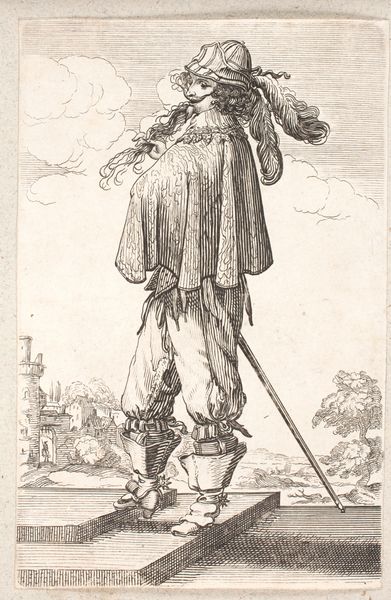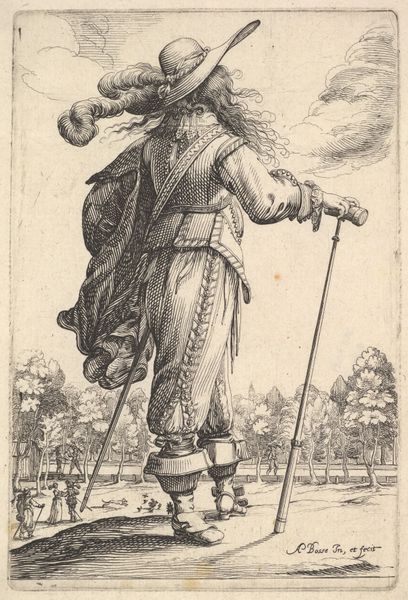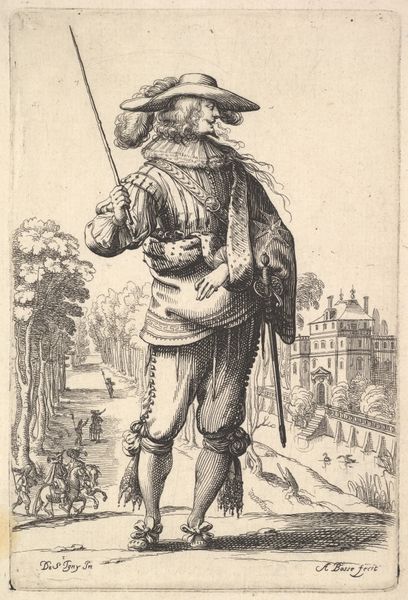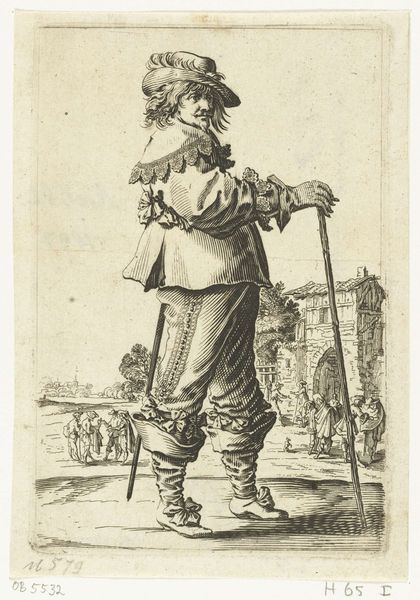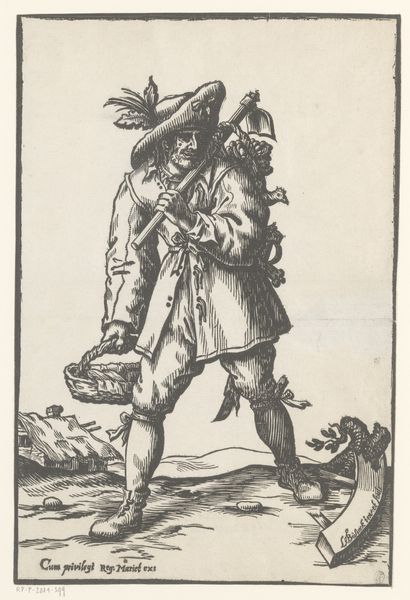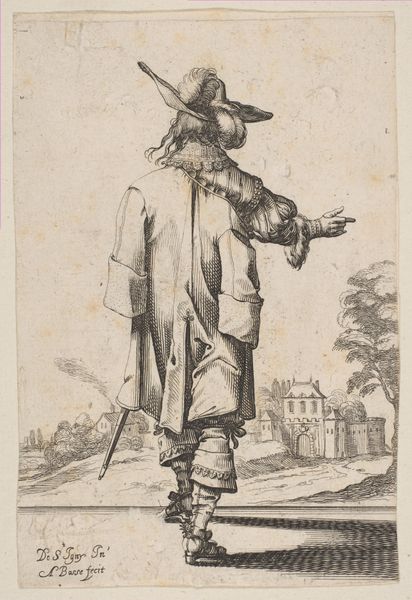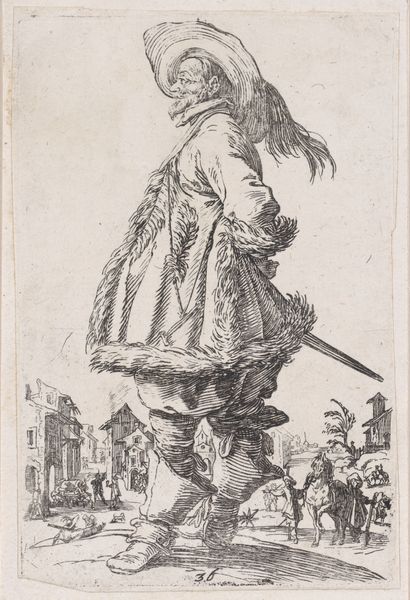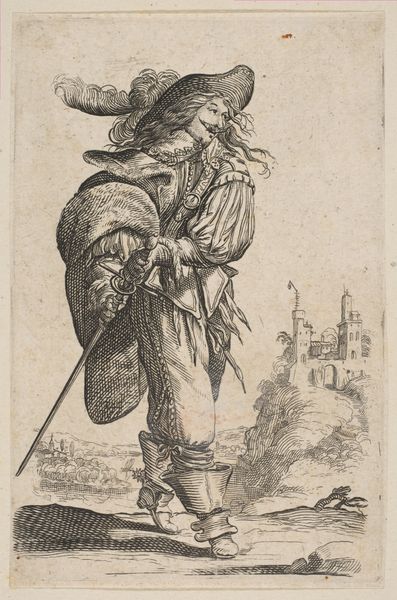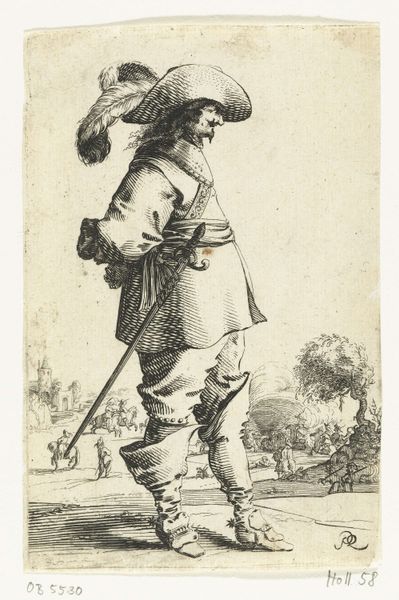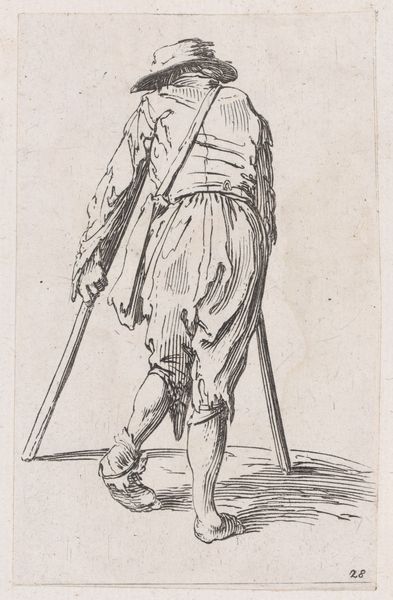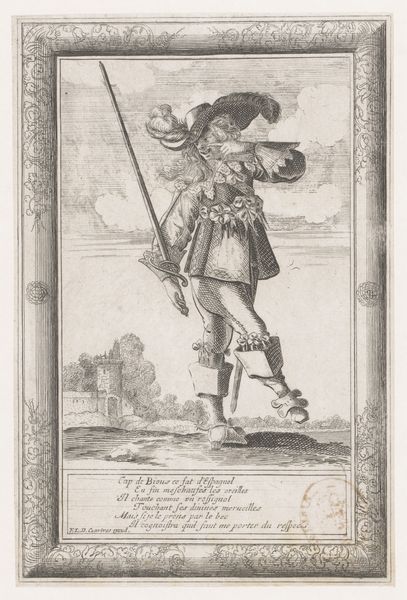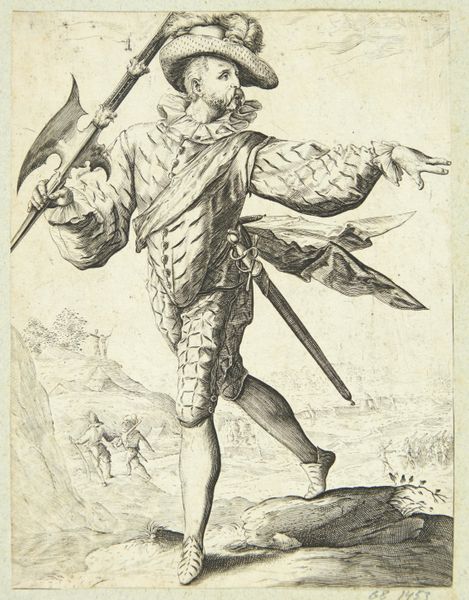
A gentleman wearing a short coat, a helmet, and boots with spurs, standing on the steps and turned towards the right, from "The Garden of the French Nobles In Which One Can Pick Up Their Way of Dressing" 1629
0:00
0:00
drawing, print, engraving
#
portrait
#
drawing
#
baroque
# print
#
figuration
#
men
#
genre-painting
#
engraving
Dimensions: Sheet: 7 3/8 × 5 1/16 in. (18.8 × 12.8 cm) Plate: 5 1/2 x 3 9/16 in. (14 x 9 cm)
Copyright: Public Domain
Editor: We’re looking at “A gentleman wearing a short coat, a helmet, and boots with spurs, standing on the steps and turned towards the right, from "The Garden of the French Nobles In Which One Can Pick Up Their Way of Dressing", a 1629 engraving by Abraham Bosse. He looks rather theatrical, and the lines are so detailed for a print! How would you interpret it? Curator: Observe how Bosse uses line, first and foremost. The density and direction of the etched lines create form, texture, and shadow. Note the difference between the solid mass of the figure, contrasted against the much more open space in the background. Also, notice how the subject seems to be caught mid-stride, a compositional trick which enlivens the space of the print. How do these elements play out in the work? Editor: I see what you mean. The heaviness of his cloak compared to the wispy clouds really emphasizes his presence. Do you think the medium itself – engraving – adds something to our understanding? Curator: Most assuredly. Engraving demands precision; the burin dictates line quality. It forces an artist to distill form to its most essential. Examine the lines describing the folds of the cloak: a lesson in economy. Ask yourself what could be removed without losing the essential idea of drapery. How does this contribute to its artistic quality? Editor: That’s a good question. It’s like he's stripped away anything unnecessary. It’s both detailed and efficient. I hadn’t thought about it that way before. Curator: Precisely! Consider also the calculated spatial relationships within the composition itself, and then ask yourself how this relates to theories about the 'picturesque'. This reveals so much about the essence of the artwork. Editor: I will! Thanks; this has been a fascinating new way to view this piece. Curator: It’s through this analytical engagement with form, line and composition that we can discover deeper meaning within the work of art itself.
Comments
No comments
Be the first to comment and join the conversation on the ultimate creative platform.
